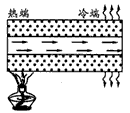阅读理解。
Tell a story and tell it well, and you may open wide the eyes of a child, open up lines of communication
in a business, or even open people's mind to another culture or race.
People in many places are digging up the old folk stories and the messages in them. For example, most
American storytellers get their tales from a wide variety of sources, cultures, and times. They regard
storytelling not only as a useful tool in child education, but also as a meaningful activity that helps adults
understand themselves as well as those whose culture may be very different from their own.
"Most local stories are based on a larger theme," American storyteller Opalanga Pugh says, "Cinderella
(灰姑娘), or the central idea of a good child protected by her goodness, appears in various forms in almost
every culture of the world."
Working with students in schools, Pugh helps them understand their own cultures and the general messages
of the stories. She works with prisoner too, helping them knowing who they are by telling stories that her
listeners can write, direct, and act in their own lives. If they don't like the story they are living, they can rewrite
the story. Pugh also works to help open up lines of communication between managers and workers. "For
every advance in business," she says, "there is a greater need for communication." Storytelling can have a great
effect on either side of the manager-worker relationship, she says.
Pugh spent several years in Nigeria, where she learned how closely storytelling was linked to the everyday
life of the people there. The benefits of storytelling are found everywhere, she says.
"I learned how people used stories to spread their culture," she says, "What I do is to focus on the value
of the stories that people can translate into their own daily world of affairs. We are all storytellers. We all have
a story to tell. We tell everybody's story."
1. What do we learn about American storyteller from Paragraph 2?
A. They share the same way of storytelling.
B. They prefer to tell the stories from other cultures.
C. They learn their stories from the American natives.
D. They find storytelling useful for both children and adults.
2. The underlined sentence (Paragraph 4) suggests that prisoners can _____.
A. start a new life
B. settle down in another place
C. direct films
D. become good actors
3. Pugh has practised storytelling with _____ groups of people.
A. 2
B. 3
C. 4
D. 5
4. What is the main idea of the text?
A. Storytelling can influence the way people think.
B. Storytelling is vital to the growth of business.
C. Storytelling is the best way to educate children in school.
D. Storytelling helps people understand themselves and others.

